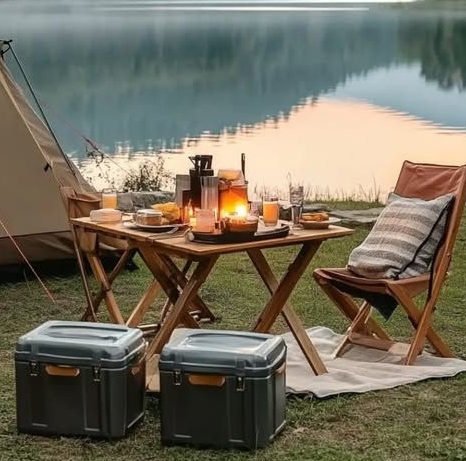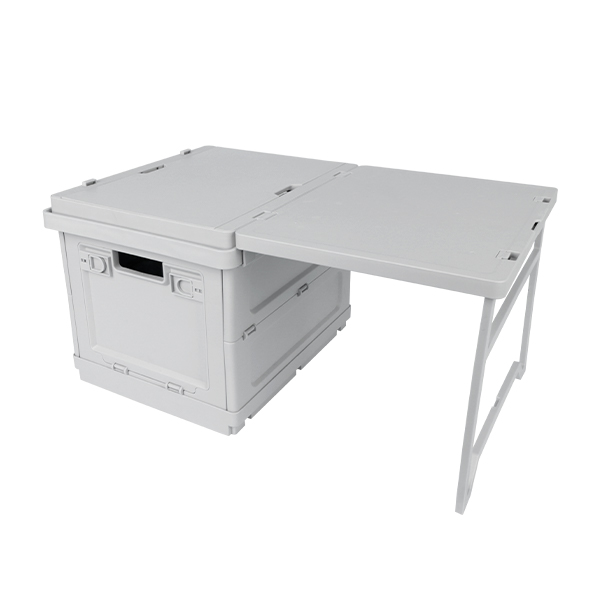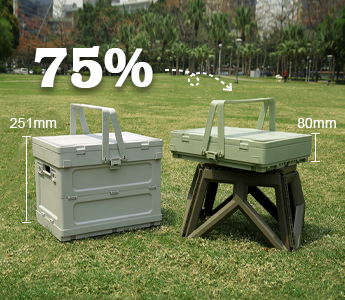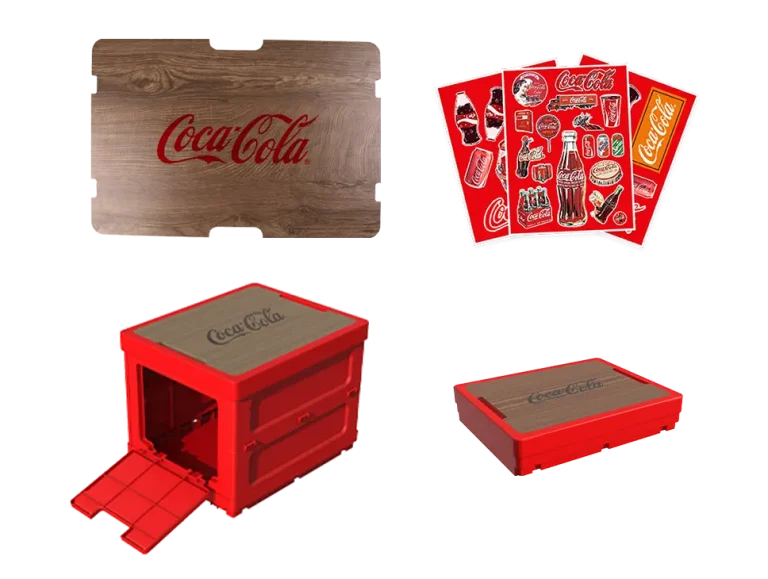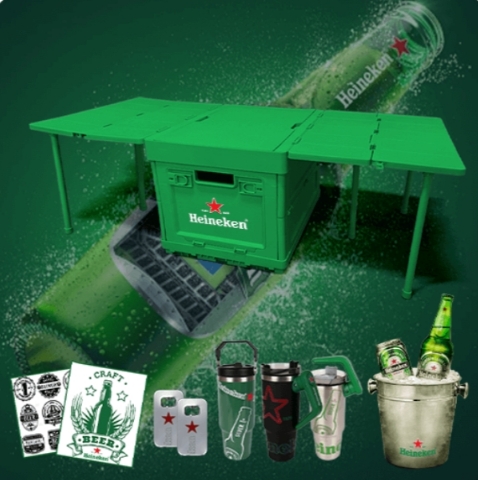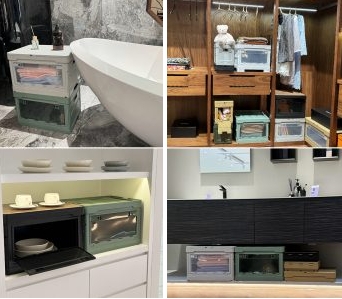How to Choose the Best Bathroom Storage Boxes & Organization Tips
Introduction: With countless types of storage containers on the market, choosing the best bathroom storage boxes for your needs can feel overwhelming. Should you go with plastic or bamboo? Lidded or open-top? Stackable or side-by-side? The right choice depends on your bathroom space, the items you need to store, and your personal style. In this guide, we’ll walk through a detailed selection process – covering materials, size, design, waterproofing, ease of use, and more – to help you confidently pick the ideal storage boxes for your bathroom. Once you’ve chosen your containers, we’ll also share practical organization tips to maximize space and keep your bathroom tidy. By the end, you’ll have an EEAT-approved (Expert, Authoritative, Trustworthy) understanding of how to select quality storage solutions and maintain an efficient, clutter-free bathroom. Let’s dive in!
How to Choose the Best Bathroom Storage Boxes
Selecting storage boxes might seem as simple as finding something that fits your stuff, but a truly effective solution considers several key factors. A box that works perfectly in someone else’s bathroom might not suit yours if the material can’t handle your humidity or the size is off for your cabinet. Below are the important criteria to evaluate when picking out the best storage boxes for your bathroom:
1. Bathroom Storage boxes Material and Durability

The material of a storage box determines its look, strength, and how well it withstands a damp bathroom environment. Common materials include plastic, acrylic, wood (or bamboo), metal, and fabric. In bathrooms, it’s crucial to choose moisture-resistant materials. Humidity and occasional splashes are inevitable, so opt for boxes that won’t warp, mold, or rust. Plastic and acrylic are top choices because they are water-safe, lightweight, and easy to clean. Clear acrylic boxes, for example, offer a modern look and won’t be damaged by water.
Similarly, high-quality laminated wood or coated MDF boxes can work well – many are treated to resist moisture and humidity, making them long-lasting options even in steamy bathrooms. If you love the look of natural wood or bamboo, make sure it’s sealed or specifically noted as bathroom-safe. Certain woods like teak or cedar are naturally more resistant to rot in humid conditions (teak is often used in shower benches for this reason).
Metal bins or wire baskets can be very durable too, but ensure they are stainless steel or powder-coated to prevent rust. In short, pick a material that balances aesthetics with durability: for a high-humidity bathroom, waterproof plastics or sealed woods are a safe bet, whereas fabric or untreated wood should be kept for dry areas or given proper protection. A well-chosen material means your storage box won’t deteriorate over time, maintaining both its function and appearance.
2.Bathroom Storage boxes Size and Space Considerations
Before buying any storage box, size matters – both the size of the box relative to what you want to store, and relative to the space you have available. Start by auditing your bathroom: Where do you plan to put these boxes? Measure the dimensions of your shelves, under-sink cabinet, or closet space. There’s nothing worse than bringing home a perfect-looking bin only to find it’s half an inch too tall for your shelf. For under-sink areas, note the pipe configuration so boxes can fit around them. For shelf storage, consider depth and height; you might choose a set of shorter bins that can stack if your shelf has a lot of headroom.
Also think about the items you’ll store in each container. If you need a box for long items like hair tools (flat irons, hair spray bottles), ensure the box length accommodates them. For a towel storage box, you’ll want something large enough to hold rolled or folded towels – possibly a wider bin or a deep basket. Smaller items like cotton swabs or makeup might fit in compact drawers or caddies. Don’t forget door clearance if placing boxes in a cabinet – you should be able to open and close doors or drawers without the box obstructing. A smart approach is to choose a variety of sizes that can work together: for example, a set with two large bins for bulky items and several small ones for odds and ends. Modular storage systems often come in graduated sizes designed to fit neatly in typical vanity or closet dimensions.
Remember, maximize vertical space if you have a small footprint – taller boxes or stackable units make the most of limited area, whereas low-profile trays might be better for shallow drawers. Ultimately, the best bathroom storage box is one that efficiently uses your available space while comfortably fitting all the items you intend to store.
3.Bathroom Storage boxes Style and Design Aesthetics
Just because a storage box is practical doesn’t mean it can’t be stylish. Since the bathroom is a space you use daily (and your guests might, too), you’ll want storage solutions that complement your decor. Design and aesthetics range from modern minimalist to rustic farmhouse to elegant spa-like styles. Think about the overall look of your bathroom: is it sleek and contemporary with glass and chrome? Warm and traditional with wood and earthy tones?
Choose Bathroom Storage boxes that align with that vibe. For a modern look, you might pick clear acrylic boxes or white high-gloss bins – these have clean lines and tend to “disappear” into the space visually, which keeps a small bathroom feeling open. If your style is more natural or bohemian, woven baskets or bamboo boxes can add texture and warmth, turning storage into a decorative element. In a luxurious or classic bathroom, you might opt for glass canisters with metal lids, or ceramic jars for items like cotton balls – these act as accent pieces on your counter.
Some storage boxes come in decorative prints or with stylish hardware (like leather pulls or metallic trim) that can elevate the look. Just ensure that form doesn’t trump function – a pretty basket is great, but it also needs to suit the item it’s holding and the moisture of the room. The good news is, there are attractive options in every category, from plastic to wood. By picking a design style that matches your taste – be it a modern storage box with sleek design or a charming rustic crate – your organizational tools will enhance the bathroom’s overall aesthetics while doing their job.
4. Waterproofing and Ventilation
Bathroom Storage boxes- Bathrooms are wet places – between steamy showers, splashing sinks, and occasional spills, your storage boxes will likely encounter moisture. Waterproof or water-resistant storage boxes are therefore highly recommended for this environment. This ties back to material choice (plastic, acrylic, resin, and laminated wood tend to handle moisture well). If you’re considering fabric bins or wooden crates, think about how you will use them: a fabric bin might be fine on a high shelf for holding extra toilet paper (which stays dry), but it’s not ideal next to the tub where it could get soaked. For any container that will sit on the floor or a counter near water sources, waterproof is best. Many plastic bins have the advantage of being washable – you can wipe them down or even rinse them out if something spills inside (like a leaky shampoo bottle).
On the flip side, consider ventilation for certain storage uses. If you are storing damp items (like washcloths that are slightly wet or a loofah), a completely sealed box could trap moisture and lead to mildew. In such cases, a ventilated basket or a box with small air holes might be better so things can dry out. For example, a wire basket or slatted bamboo box allows airflow, which is great for bath toys or sponges that need to drain. Some designs have clever features like removable liners (e.g. a fabric-lined wicker basket where you can wash the liner) or built-in moisture absorbers. If you live in a very humid climate, consider adding silica gel packets or a closet dehumidifier box in with sensitive items (like photos or electronics you might store in a bathroom closet). In summary: choose storage boxes that can handle water exposure for wet areas, and use breathable containers for anything that could be put away damp. Ensuring your storage is waterproof when necessary will prolong the life of both the box and its contents, while ventilated options will prevent the funky odors or mold that come from trapped moisture.
5. Ease of Use (Accessibility)
A storage box is only helpful if it’s user-friendly. Ease of use encompasses how easy it is to access items in the box, how portable it is, and how it fits into your daily routine. When evaluating options, imagine yourself using that box on a typical day. Do you need to frequently grab items from it? If so, something with a simple open top or a quick flip-up lid would be convenient – you won’t want to unstack heavy boxes or fiddle with a tight lid every morning. On the other hand, if the box is for seldom-used stuff (say, backup supplies or occasional guest toiletries), a secure lidded box that you tuck away is fine. Consider features like handles or grips – if you’ll pull a box down from a high shelf, handles make it easier (and safer). Labels or clear panels are also a huge plus for ease of use: being able to identify contents at a glance (especially for opaque boxes) saves you from opening multiple boxes to find one thing. This could be as simple as a label maker sticker or a chalkboard label on the side. Transparency is a form of accessibility too; as mentioned, clear containers let you see contents instantly, which is why many people use clear bins for things like cosmetics or first aid supplies.
Also think about who is using the bathroom. If you have kids, choose Bathroom Storage boxes that they can handle – maybe lower, open bins for their bath toys or easy-slide drawers for their toiletries, so they can learn to put things away. If someone in the home has mobility issues, avoid storage that requires bending way down or reaching up too high; instead, keep daily-use boxes at a comfortable height and use drawer-style organizers that pull out to you. Stackable vs. side-by-side configuration affects accessibility as well: stacking saves space but can be inconvenient if you need items from the bottom box often. One solution is to use stackable drawers (so you can pull out the bottom drawer without unstacking). In summary, prioritize storage boxes that make your life simpler. The goal is that retrieving and storing items is almost effortless. When your organizers are easy to use, you’re far more likely to keep up with the system you’ve set, and everyone in the household can find what they need without frustration.
6. Stackable bathroom storage boxes and Modularity

Especially in small or storage-challenged bathrooms, the ability to build upwards with your storage is a game-changer. Stackable storage boxes help maximize vertical space, letting you fit more into a given area while keeping it orderly. If you have a open shelves or floor space, look for boxes that are designed to stack securely – they might have indented lids or clips to keep them stable when one sits on another. For example, you could stack two or three narrow bins on the back of the toilet tank or on a shelf to hold different categories of items (one box for dental care, one for skincare, one for medicines). By stacking, you effectively use air space that would otherwise be wasted. Make sure the bottom box can support the weight of those above and that you can still easily pull them out or open them as needed (clear labeling helps if you’re stacking).
Modularity takes stackability a step further: modular storage systems come with multiple pieces in various sizes that fit together like a puzzle. This means you can customize the layout to your space. Perhaps you line up three small bins next to a tall bin, and they all snap together or align neatly. The benefit is a tailored solution that looks cohesive and avoids wasted gaps. For instance, inside a deep drawer, a modular set might perfectly fill the space with no room wasted, turning a messy drawer into a set of organized compartments. Another aspect of modular design is future flexibility – if you buy all one line of boxes, you can reconfigure or add more later and they will match/stack. Consider also how the boxes work when not stacked: nested sets (where smaller boxes nest into larger ones) are convenient for storing the organizers themselves when not in use, though in a bathroom you’ll likely always be using them.
In practice, think about your current and future needs. If you might expand your storage or repurpose boxes elsewhere later, investing in a modular, stackable style is wise. Ultimately, using stackable and modular storage boxes allows you to optimize every inch of space in your bathroom, giving you a decluttered look without wasting vertical capacity. Just be mindful to stack smartly — put less-used items up high or at the bottom of a stack, and keep daily needs at the top of stack or front of a module for easy reach.
Best storage box for bathroom Organization Tips for a Well-Organized Bathroom
Once you have the right storage boxes in hand, the next step is arranging everything in a logical, space-efficient way. Good organization is about how you use those containers and the habits you build. Here are some expert-backed tips to maximize space and maintain an organized bathroom:
category its own container. This way, when you need something (say a bandage or a hairspray), you know exactly which box to go to. Grouping items makes it easier to find things and also highlights when you have duplicates or need to restock. For example, keep all your extra shampoos and soaps in one basket – it prevents you from accidentally buying what you already have and keeps backups neat.
Once you’ve grouped items, label the containers – especially if they are not transparent. Use a label maker, stickers, or even masking tape and a marker; what matters is that at a glance you (and your family) know what’s in each box. Labeled storage contributes to that “a place for everything” feeling and encourages everyone to return items to the proper box after use. If you have a bathroom closet or cabinet, you can even label the shelf edge for what goes where. As Good Housekeeping organizers advise, categorizing and labeling are key to maximizing space and finding things easily. For instance, label one bin “Towels”, another “Medication”, another “Bath Toys” – it instantly brings order.
Bathrooms often have limited floor area, so think vertically. Add shelves or stacking units to exploit height. Stackable storage boxes (as discussed) let you build up on a shelf or under the sink. Also consider hanging storage: could you add an over-the-door organizer for things like toiletries or use wall-mounted baskets for extra toilet paper? Utilizing vertical space can even mean sticking adhesive hooks inside cabinet doors to hang lightweight caddies or baskets. The idea is to get items off countertops and floors by giving them elevated homes. For example, attach a tiered shelf above the toilet or a tension pole caddy in the shower for shampoos. By using your walls and vertical gaps, you free up precious surface area and keep the bathroom looking open and tidy.
If you have any little nooks or gaps (between appliances or furniture), put them to work with slim storage. As mentioned earlier, a narrow rolling cart or gap storage box can slide into tight spots to hold a surprising amount of stuff. Behind the toilet is a classic unused space – an over-the-toilet stand or even a nice basket on the tank can serve as storage. Consider corner shelves for awkward corners, or a small basket on the windowsill. Even the space under the bathroom sink pipes can fit a shallow bin for flat items like extra soap bars or cleaning wipes. When every cranny has a purpose, you greatly expand your storage capacity without increasing your bathroom’s footprint.
Identify your everyday use items (toothbrush, toothpaste, deodorant, face wash, etc.) and ensure those are very easily accessible. A popular method is to have an open-top caddy or tray on the countertop with daily essentials. This container keeps the items corralled (so the counter isn’t cluttered) but is completely frictionless to access – no lids or cabinets to open in your groggy morning state. If you prefer a cleaner counter, dedicate the top drawer of your vanity as the “daily drawer” and use small bins inside it to organize those must-grabs. The key is not burying frequent-use items under less-used stuff. By making daily necessities convenient to grab and put back, you prevent clutter build-up from hurried mornings.
For items you don’t need often (extra toilet paper packs, bulk toiletries, guest supplies), feel free to stow them in less prime real estate – like the top shelf of a closet or the very back of under-sink storage. Use a sturdy lidded box or large bin for these and label it clearly. You might, for instance, have a big plastic box on the top closet shelf labeled “Extras” containing spare shampoo, soap, toothpaste, etc. Since you only reach for it occasionally to refill your smaller containers, it won’t inconvenience you to keep it out of the way. This approach leaves the eye-level and front-and-center spaces available for the items you use frequently. Essentially, reserve easy-access zones for daily stuff, and tuck away the overflow stock.
Drawers can become jumbled catch-alls if left unchecked. Use small storage boxes, dividers, or trays inside drawers to segment space. For example, in a vanity drawer, have a slender box for makeup brushes, another for tubes and bottles, and a shallow tray for tiny items like tweezers or nail clippers. This prevents items from rolling around and mixing. When everything has a little compartment, you can open the drawer without seeing chaos. It also helps you immediately spot when something’s missing or running low. Drawer dividers essentially act as mini storage boxes within your furniture – they are an organization secret weapon for maintaining order behind closed doors.
No organizing system stays perfect forever – products get used up, new ones come in, and sometimes clutter sneaks back. Plan to periodically declutter your bathroom, perhaps once a month or every couple of months. Go through your storage boxes and remove anything expired, broken, or no longer needed. This is a good time to wipe down the inside of boxes or replace liners if you use them. By keeping on top of the contents, you prevent your nice storage solutions from becoming overstuffed. It also gives you a chance to adjust your system if something isn’t working well. Maybe you realize you need an extra box for a new category (say, you started a bath bomb collection – get a container for those). Regular maintenance ensures your bathroom remains a well-oiled machine and upholds that authoritative level of cleanliness and order you’ve achieved.
-
Finally, remember that the best organization is one that fits your lifestyle. Use cases for storage boxes will vary: a family with kids might keep a low open bin of bath toys that drains easily, whereas a single person might use that space for a magazine basket. If multiple people share the bathroom, consider assigning each person a caddy or color-coded box for their personal items. For instance, your partner gets the top shelf basket and you get the next shelf basket for toiletries – this keeps items from mixing and everyone responsible for their own zone. If you have a small bathroom with no closet, you might invest in a wall cabinet or a over-toilet unit and then use baskets on those shelves. Think creatively: a cake stand can become a countertop organizer for perfumes; a kitchen spice rack can hold nail polish bottles. The goal is a solution that makes sense for you. Don’t be afraid to repurpose containers or try unconventional arrangements if it solves a storage need. As long as you follow the general principles (group like items, keep things easy to access, use your space fully, etc.), you can adapt the specifics to match your household’s routines and needs.
